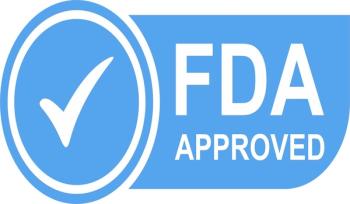
Examining Predictors of Vaccination Adherence for COVID-19, Influenza
Individuals who completed their full primary series of COVID-19 vaccination were more likely to report getting the influenza vaccine vs those who did not, and vice versa.
People who are vaccinated for COVID-19 or influenza are more likely to receive the vaccine for the other
Education and political affiliation were shown to influence likelihood of vaccine adherence in the study cohort. Additionally, among individuals who historically never got the influenza vaccine, those receiving the COVID-19 vaccine were substantially more likely to switch toward getting the influenza vaccine.
“Understanding willingness to receive new vaccines is critical for vaccine rollout and addressing vaccine hesitancy. Future COVID-19 and influenza vaccination may coincide, creating a need to understand the dynamics between ongoing vaccine adherence for familiar diseases and novel vaccine acceptance,” explained the study authors.
Researchers conducted a longitudinal analysis of survey data derived from RAND’s American Life Panel (ALP), a probability-sampled panel of US adults that analyzed ALP self-reported vaccination across 6 influenza seasons spanning 2009 to 2017, to determine how COVID-19 vaccination differs across historical influenza vaccination patterns and how influenza vaccination changed during the COVID-19 pandemic.
In the present study, individuals’ year-to-year tendency to repeat prior vaccination behaviors were classified as never, sometimes, or always influenza vaccinators. Subsequent influenza vaccination behavior (2019 to 2020) was assessed in May to June 2020 (n = 1643; 85% completion), which was indicated to be largely conducted prepandemic.
Moreover, COVID-19 vaccination, along with 2020 to 2021 and 2021 to 2022 influenza vaccination, was assessed in February to March 2022 (n = 2145; 68.8% completion). COVID-19 vaccinated individuals included those who were fully vaccinated with the primary series, meaning a single dose of Johnson & Johnson or 2 doses of Pfizer/Moderna. Boosters were not considered.
Race and ethnicity were self-reported. Sampling weights were applied for all analyses, which were performed from June to September 2022.
Among the 1366 survey respondents (mean [SD] age, 56 [13] years) who had complete data, 771 (56%) were female, 33 (2%) were Asian, 101 (7%) were Black, 156 (11%) were Hispanic, and 1161 (85%) were White.
A total of 81.4% (291 of 358; 2021-22 influenza) to 92.2% (330 of 358; 2019-20 influenza) of individuals classified as always influenza vaccinators through 2017 continued to vaccinate against influenza 2 to 4 influenza seasons later. As for those classified as never vaccinators through 2017, 20.3% (130 of 642) got influenza vaccination in 2019-2020, which was largely prepandemic, and this increased to 23.5% (151 of 642) during the pandemic.
Individuals classified as always influenza vaccinators were 24.7% more likely to get COVID-19 vaccination vs never influenza vaccinators. Likelihood of vaccination adherence for both infectious diseases were shown to be influenced by several factors:
- Probability of full COVID-19 vaccination was 50% higher if the respondent reported getting the influenza vaccine in the 2021-2022 season (90.9% [858 of 944] vs 60.9% [440 of 723]; risk ratio [RR], 1.50; 95% CI, 1.40-1.59).
- 2021-2022 influenza vaccination was 230% higher if the respondent reported getting a full initial COVID-19 vaccine (57.1% [585 of 1025] vs 17.3% [59 of 341]; RR, 3.30 [95% CI, 2.65-4.27]).
- For panelists classified as never influenza vaccinators through 2017, those receiving the COVID-19 vaccine were more than 12 times more likely to have switched from not receiving (in 2020) to receiving (in 2022) the influenza vaccine (odds ratio [OR], 12.82; 95% CI, 1.46-112.67).
- Individuals who were classified as never influenza vaccinators were more likely to receive full primary series of COVID-19 vaccine and switch from no influenza vaccination in 2020 to influenza vaccination in 2022 if they had more education (Bachelor’s degree or more).
- Identifying as Democrat (vs Republican) was associated with COVID-19 vaccination (OR, 4.43; 95% CI, 1.51-12.97), but not associated with switching from no influenza vaccination to influenza vaccination.
Researchers noted that findings of the study are limited by self-reported vaccination. Nonetheless, they said that the results reinforce those of studies showing shorter-term correlation between influenza and COVID-19 vaccination.
“Most strikingly, among individuals who historically never got the influenza vaccine, those receiving COVID-19 vaccine were substantially more likely to switch toward getting the influenza vaccine,” the study authors concluded. “This suggests that investing in vaccine acceptance has payoffs beyond the vaccine itself.”
Reference
Parker AM, Atshan S, Walsh MM, Gidengil CA, Vardavas R. Association of COVID-19 vaccination with influenza vaccine history and changes in influenza vaccination. JAMA Netw Open. 2022;5(11):e2241888. doi:10.1001/jamanetworkopen.2022.41888
Newsletter
Stay ahead of policy, cost, and value—subscribe to AJMC for expert insights at the intersection of clinical care and health economics.















































